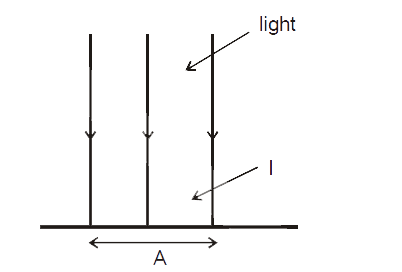A beam of light of wavelength λ and with illumination L falls on a clean surface of sodium . If N photoelectrons are emitted each with kinetic energy E , then
N∝LandE∝L
N∝LandE∝1λ
N∝λandE∝L
N∝1λandE∝1L
The correct Answer is:B
Step by step video, text & image solution for A beam of light of wavelength lambda and with illumination L falls on a clean surface of sodium . If N photoelectrons are emitted each with kinetic energy E , then by Physics experts to help you in doubts & scoring excellent marks in Class 12 exams.
Updated on:21/07/2023Topper's Solved these Questions
- ELECTRON, PHOTON, PHOTOELECTRIC EFFECT AND X-RAYSBOOK - ERRORLESS CHAPTER - ELECTRON, PHOTON, PHOTOELECTRIC EFFECT AND X-RAYSEXERCISE - Cathode Rays and Positive Rays
11 Videos
- ELECTRON, PHOTON, PHOTOELECTRIC EFFECT AND X-RAYSBOOK - ERRORLESS CHAPTER - ELECTRON, PHOTON, PHOTOELECTRIC EFFECT AND X-RAYSEXERCISE - Photon and Photoelectric Effect
4 Videos
- ELECTRO MAGNETIC INDUCTIONBOOK - ERRORLESS CHAPTER - ELECTRO MAGNETIC INDUCTIONEXERCISE - SET
20 Videos
- ELECTRONICSBOOK - ERRORLESS CHAPTER - ELECTRONICSEXERCISE - Selv Evaluation Test
23 Videos
Similar Questions
When monochromatic light of wavelength 620 nm is used to illuminate a metallic surface, the maximum kinetic energy of photoelectrons emitted is 1 eV. Find the maximum kinetic energy of photoelectron emitted (in eV) if a wavelength of 155 nm is used on the same metallic surface. (hc = 1240 eV-nm)
View SolutionWhen electromagnetic radiation of wavelength 300 nm falls on the surface of sodium, electrons are emitted with kinetic energy of 1.68×105Jml−1. What is the minimum energy needed to remove an electron from sodium ? What is the maximum wavelength that will cause a photoelectron to be emitted.
View Solution
Knowledge Check
An e-m wave of wavelength λ is incident on a photo sensitive surface of negligible work function. If the photoelectrons emitted from this surface have the de-Broglie wavelength λ1. Find relation between 'λ' and 'λ1'-
Aλ=(2mch)λ21Bλ=(mc2h)λ21Cλ1=(2mch)λ2DNone of theseIf light of wavelength λ1 is allowed to fall on a metal , then kinetic energy of photoelectrons emitted is E1. If wavelength of light changes to λ2 then kinetic energy of electrons changes to E2. Then work function of the metal is
AE1E2(λ1−λ2)λ1λ2BE1λ1−E2λ2(λ1−λ2)CE1λ1−E2λ2(λ2−λ1)Dλ1λ2E1E2(λ2−λ1)Light of wavelength λ strikes a photo - sensitive surface and electrons are ejected with kinetic energy is to be increased to 2E , the wavelength must be changed to λ' where
Aλ'=λ2Bλ'=2λCλ2<λ'<λDλ'>λ
When electromagnetic radiation of wavelength 300 nm falls on the surface of sodium, electrons are emitted with kinetic energy of 1.68×105Jml−1. What is the minimum energy needed to remove an electron from sodium ? What is the maximum wavelength that will cause a photoelectron to be emitted.
View SolutionA beam of light having wavelength λ and intensity 1 falls normally on an area A of a clean surface then
find out the number of photon incident on the surface.

View SolutionA UV light of wavelength 320 nm is incident on a photosensitive surface and photoelectrons are emitted from it . The stopping potential is 0.48 V. Find
(i) the energy of each incident photon.
(ii) maximum kinetic energy of a photoelectron.
(iii) work function of surface.
View SolutionIf an em wave of wavelength λ is incident on a photosenstive surface of negligible work function. If the photoelectrons emitted from this surface have the de-Broglie wavelength λ1, prove that
λ=(2mch)λ21
View SolutionWhen a radiation of energy 5eV falls on a surface,the emitted photoelectrons have a maximum kinetic energy of 3eV .The stopping potential is
View Solution
